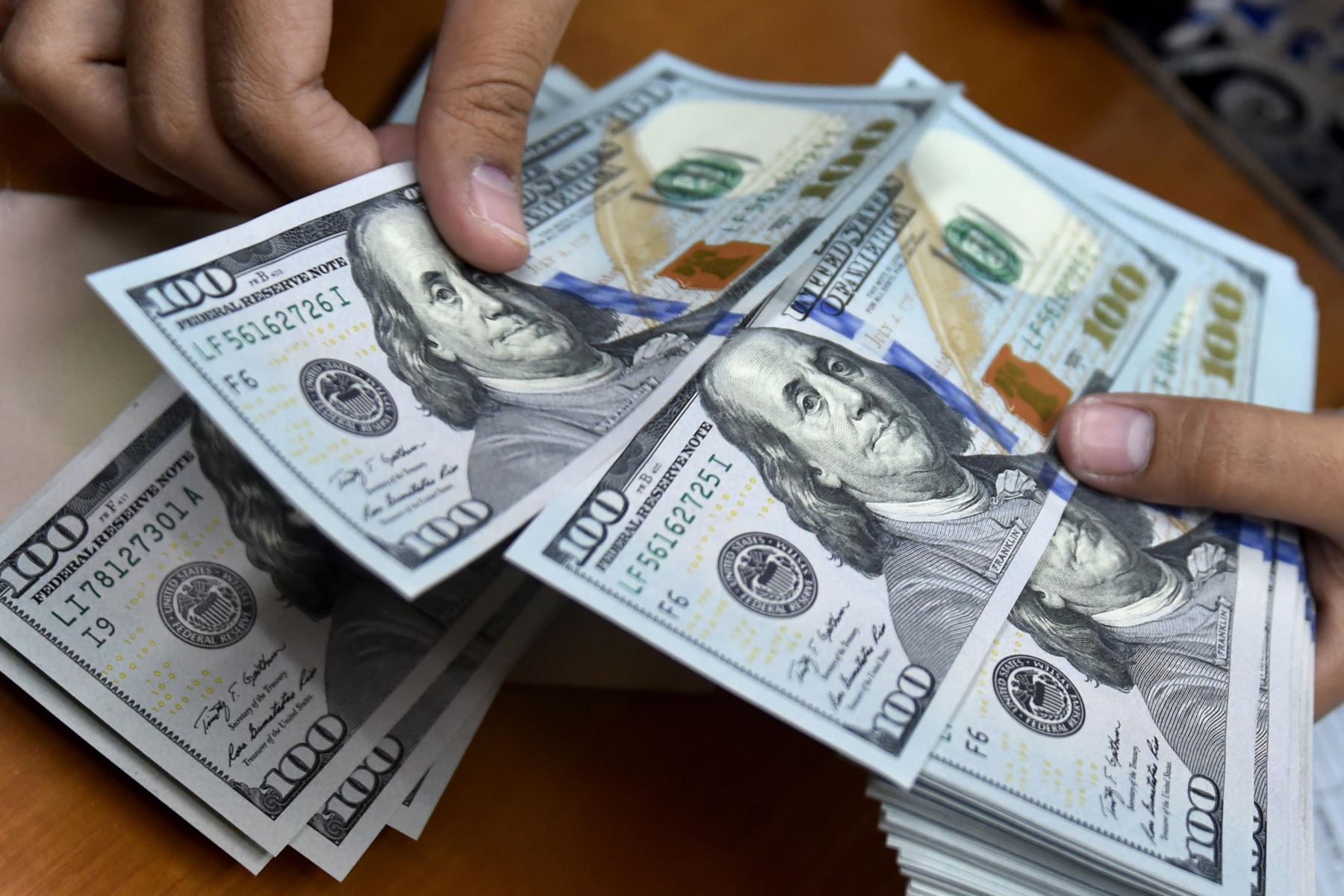( Spanish) — The main currencies of Latin America closed with losses this Thursday, with the Colombian peso being one of the currencies with the greatest losses of the day, followed by the Brazilian real.
This in the midst of a strengthening of the dollar in the world market due to “renewed fears of aggressive increases in interest rates in the United States, supported by statements by different officials of the Federal Reserve (Fed), in that sense,” reported the Reuters agency.
This Thursday at the close of the day, the dollar index, which measures the currency against several currencies, increased by around 1.2%, in its second consecutive day of advance.
In this sense, the main Latin American currencies were affected, depreciating against the value of the dollar, as follows:
- The Colombian peso was the most devalued currency on Thursday, October 6, which ended with losses of 0.68%. The dollar closed at an average of 4,672, a historic value in the foreign exchange market, driven by comments from President Gustavo Petro who suggested putting a transitory capital flow tax on it to prevent flight and questioned the rise in interest rates by the Bank. of the Republic.
- Meanwhile, the Brazilian real depreciated 0.50% on Thursday, reaching 5.22 units per dollar.
- The Peruvian sol lost 0.28% and the dollar closed this Thursday at 3.9 soles.
- The Argentine peso closed at 149.18 pesos per dollar, a drop of 0.19% at the close of this Thursday.
- The Mexican peso closed at 20.1282 in the market on Thursday, down 0.38% from the previous day’s price, Reuters reported, its second day of losses.
- The Chilean peso, meanwhile, had a marginal drop of 0.03%, and the price of the peso was quoted at 942 units per dollar.
World currencies against the dollar
The pound sterling approached its lowest level of the week, registering a sharp fall of 1.1170 pounds per dollar, reported Reuters. On September 25, the pound sterling hit a low of 1,035 per dollar, while the previous historical low of that currency against the US dollar was 37 years ago, on February 25, 1985, when 1 pound was worth US $ 1,054
At the close of this Thursday, the euro sank to its lowest level since Monday, at 0.98005 dollars per euro.
The Japanese yen had a new low and was above 145 yen per dollar on Friday night, as reported by Reuters. The Japanese authorities intervened on September 22 in support of their currency for the first time since 1998, after breaking above the level of 145 per US dollar.
Why is the dollar so strong against world markets?
The US dollar has risen approximately 10% throughout 2022 against other currencies, a situation that can be explained by the concern that investors have of a global recession, for which many have rushed to get dollars, which for many is a safe haven, Kristina Hooper, a strategist, told . Invesco global market manager.
“That has been clear in recent days: when there is volatility and when there is uncertainty there is a migration to the US dollar,” Hooper told this week.
For Hooper, there are a couple of other reasons that have strengthened the dollar and both have to do with fears of an economic recession. The first is that while the US economy is under pressure, it has a “lower outlook” than other major world economies such as Britain and the Eurozone. And the other has to do with the rise in interest rates by the Federal Reserve.
“Another key factor is rates and expectations about where those interest rates will go. And clearly rising interest rates, plus the Fed’s hawkish language that we continue to see, are contributing to dollar strength.” the Invesco analyst told .
And that aggressive rise in interest rates has made American investments more attractive, as they now offer higher returns.
Although this could be something positive for the internal economy of the United States, “given that the country has an economy based on consumption” according to Hooper, the truth is that for the international markets and for Wall Street, the situation “could be something negative, according to the Invesco analyst.
About half of international trade is invoiced in dollars, which increases the bills of manufacturers and small businesses that depend on imported products. Governments that need to pay their dollar debts could also run into trouble, especially if reserves run dry.
And this increase in the dollar has affected the economies of Asian countries in recent months.
The dollar shortage in Sri Lanka contributed to the worst economic crisis in the country’s history, ultimately forcing its president out of office in July this year. Pakistan’s rupee plunged to a record low against the dollar in late July, pushing it to the brink of default. And Egypt, battered by rising food prices, was grappling in August with a depleted dollar reserve and an exodus of foreign investment. These three countries turned to the International Monetary Fund for help.
While the value of the US dollar tends to rise when the US economy is very strong or, somewhat counterintuitively, when it is weak and the world is facing a recession.
The “dollar smile” can affect other countries
If anything, investors see the US dollar as an opportunity to lock in growth or a relatively safe place to park cash while they weather the storm.
The phenomenon is often referred to as the “dollar smile” as it rises at both ends.
But the result of this strengthening of the dollar can lead to several negative situations for countries around the world with smaller economies, Manik Narain told director of cross-asset strategy for emerging markets at UBS.
1. It can add fiscal strain. Not all countries have the ability to borrow money in their local currency, as foreign investors may not have faith in their institutions or have less developed financial markets. That means some have no choice but to issue dollar-denominated debt. But if the value of the dollar soars, that makes it more expensive to pay its obligations, depleting government coffers.
It also makes it more expensive for governments or companies to import food, medicine, and fuel.
2. Fuels capital flight. When a country’s currency drastically weakens, wealthy individuals, businesses, and foreign investors begin withdrawing their money in hopes of keeping it in a safer place. That pushes the currency down even further, exacerbating fiscal problems.
3. It weighs on growth. If companies can’t afford the imports they need to run their businesses, they won’t have as much inventory. That means they won’t be able to sell as much, even if demand remains strong, weighing on economic output.
In Latin America, however, there is hope, according to Brad Setser of the Council on Foreign Relations think tank.
The largest players, such as Brazil, Mexico and Indonesia, “have generally not borrowed much in foreign currency and now have enough foreign exchange reserves to handle their external debt load,” according to Setser.
In addition, the prices of raw materials such as oil and base metals remain high. That helps emerging economies that are big exporters, including many in Latin America, and serves as a reliable way to ensure dollars keep flowing into government coffers.
— With information from Reuters, and Matt Egan and Julia Horowitz of Business.











